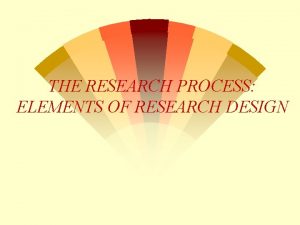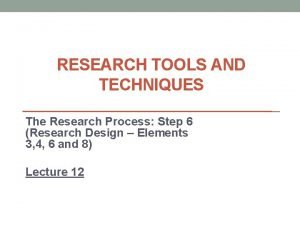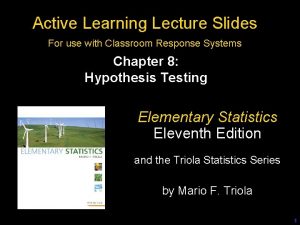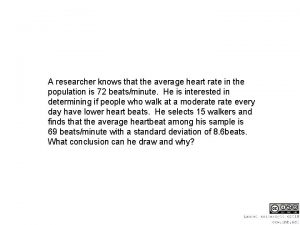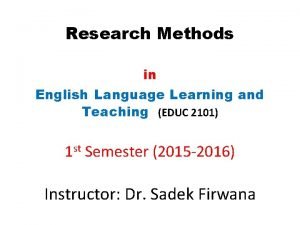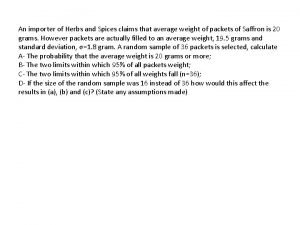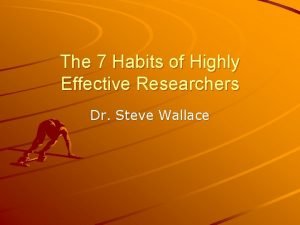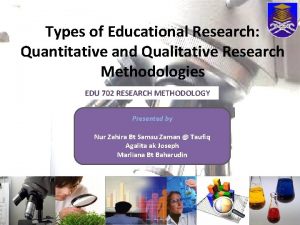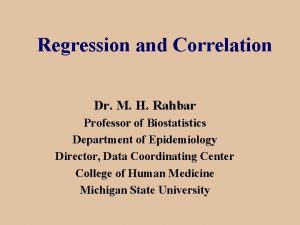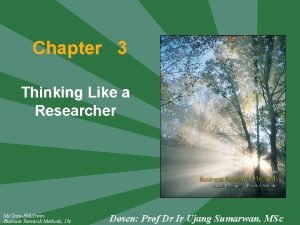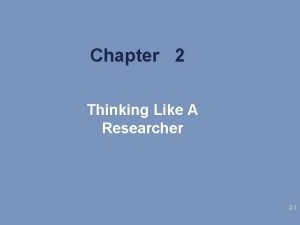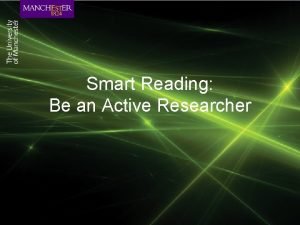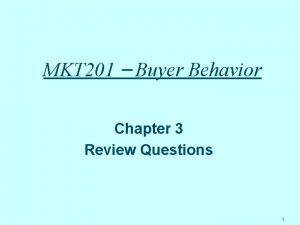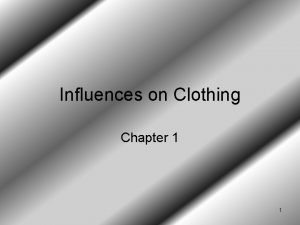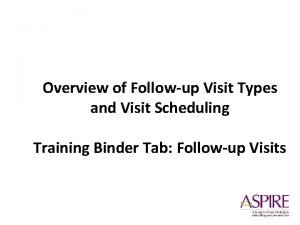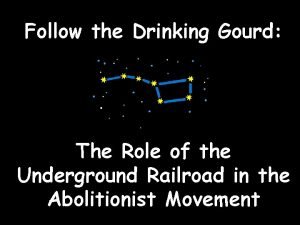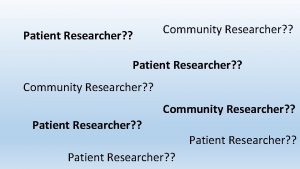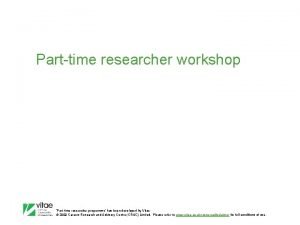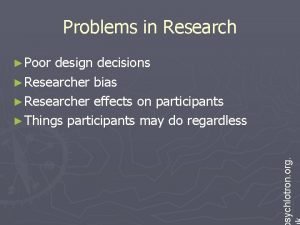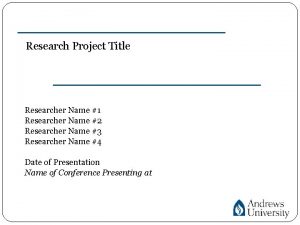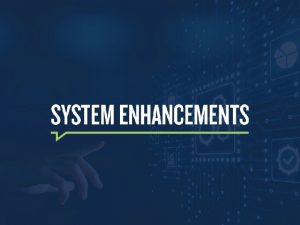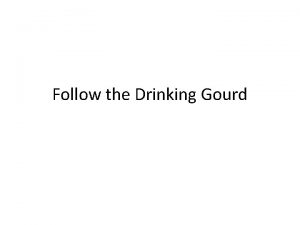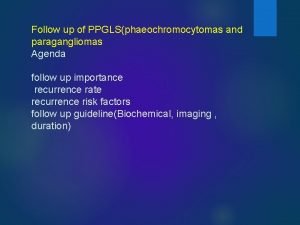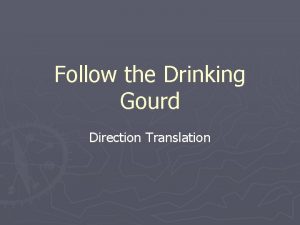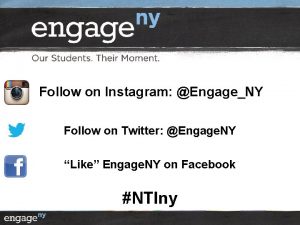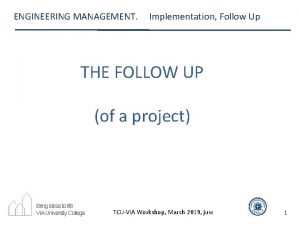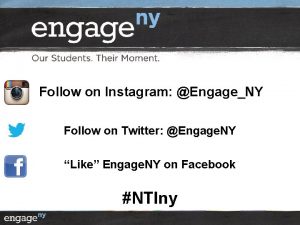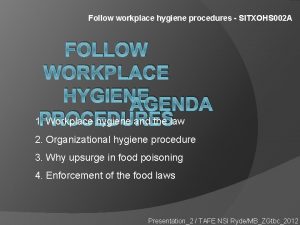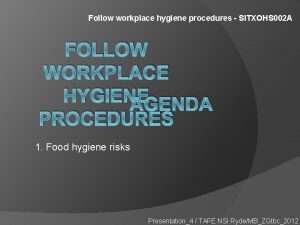LO 7 1 A researcher decides to follow






























- Slides: 30

LO 7. 1 A researcher decides to follow a group of children into adulthood to assess whether attachment styles formed with their parents has an effect on their intellectual growth over time. This is an example of what type of research? 1. 2. 3. 4. 5. Cross-sectional Cross-sequential Longitudinal Experimental Case study 1

LO 7. 1 A researcher decides to follow a group of children into adulthood to assess whether attachment styles formed with their parents has an effect on their intellectual growth over time. This is an example of what type of research? 1. 2. 3. 4. 5. Cross-sectional Cross-sequential Longitudinal (p. 250 -251) Experimental Case study 2

LO 7. 4 Dizygotic twins are conceived due to the fact that: 1. 2. 3. 4. 5. One egg split into two separate zygote. Two eggs were fertilized by one sperm cell. One egg was fertilized by two sperm cells. Two eggs were fertilized by two sperm cells. The cause is unknown. 3

LO 7. 4 Dizygotic twins are conceived due to the fact that: 1. 2. 3. 4. 5. One egg split into two separate zygote. Two eggs were fertilized by one sperm cell. One egg was fertilized by two sperm cells. Two eggs were fertilized by two sperm cells. (p. 255) The cause is unknown. 4

LO 7. 6 This period of pregnancy is probably the time of most growth, with the biggest gains in weight for the baby: 1. 2. 3. 4. 5. Fetal Embryonic Germinal Critical period Conception 5

LO 7. 6 This period of pregnancy is probably the time of most growth, with the biggest gains in weight for the baby: 1. 2. 3. 4. 5. Fetal (p. 259) Embryonic Germinal Critical period Conception 6

LO 7. 6 Teratogens, or drug, chemical, or other factors that can bring about birth defects, may have their greatest effect on cardiovascular development at which point in time of prenatal development? 1. 2. 3. 4. 5. From 6 -8 weeks From 4 -6 weeks From 3 -16 weeks From 4 -5 weeks From 6 -9 weeks 7

LO 7. 6 Teratogens, or drug, chemical, or other factors that can bring about birth defects, may have their greatest effect on cardiovascular development at which point in time of prenatal development? 1. 2. 3. 4. 5. From 6 -8 weeks From 4 -6 weeks From 3 -16 weeks (p. 258) From 4 -5 weeks From 6 -9 weeks 8

LO 7. 7 Infants are born into the world with a series of innate, involuntary reflexes that help to aid their survival. The reflex that is involved with response to a loud noise is called: 1. 2. 3. 4. 5. Sucking Babinski Grasping Moro Rooting 9

LO 7. 7 Infants are born into the world with a series of innate, involuntary reflexes that help to aid their survival. The reflex that is involved with response to a loud noise is called: 1. 2. 3. 4. 5. Sucking Babinski Grasping Moro (p. 260) Rooting 10

LO 7. 9 During which stage of Piaget’s theory of cognitive development does a child obtain the understanding of object permanence? 1. 2. 3. 4. 5. Preoperational period Sensorimotor period Concrete operations Formal operations Post-formal operations 11

LO 7. 9 During which stage of Piaget’s theory of cognitive development does a child obtain the understanding of object permanence? 1. 2. 3. 4. 5. Preoperational period Sensorimotor period (p. 264 -265) Concrete operations Formal operations Post-formal operations 12

LO 7. 9 Each of the following are criticisms of Piaget’s model of cognitive development EXCEPT: 1. 2. 3. 4. 5. Piaget underestimated how early children develop an understanding of object permanence. Preschoolers are not as egocentric as Piaget believed. Piaget underestimated the role of social interactions in influencing the rate at which children develop cognitive skills. Development may be more continuous than Piaget suggested. Piaget did not believe that children’s cognitive understanding was qualitatively different than that of adults. 13

LO 7. 9 Each of the following are criticisms of Piaget’s model of cognitive development EXCEPT: 1. 2. 3. 4. 5. Piaget underestimated how early children develop an understanding of object permanence. Preschoolers are not as egocentric as Piaget believed. Piaget underestimated the role of social interactions in influencing the rate at which children develop cognitive skills. Development may be more continuous than Piaget suggested. Piaget did not believe that children’s cognitive understanding was qualitatively different than that of adults. (p. 264) 14

LO 7. 10 The order of stages of language development that are experienced by children of all cultures is: 1. 2. 3. 4. 5. Cooing, crying, babbling, one-word speech, telegraphic speech Crying, cooing, one-word speech, babbling, telegraphic speech Crying, telegraphic speech, one-word speech, cooing, babbling Crying, cooing, telegraphic speech, one-word speech, babbling 15

LO 7. 10 The order of stages of language development that are experienced by children of all cultures is: 1. 2. 3. 4. 5. Cooing, crying, babbling, one-word speech, telegraphic speech Crying, cooing, babbling, one-word speech, telegraphic speech (p. 269) Crying, cooing, one-word speech, babbling, telegraphic speech Crying, telegraphic speech, one-word speech, cooing, babbling Crying, cooing, telegraphic speech, one-word speech, babbling 16

LO 7. 11 A child who ________ is able to explore a room of toys happily in the presence of their mother, is temporarily distressed when a stranger enters the room and the mother leaves, but is happy again when the mother later returns. 1. 2. 3. 4. 5. has an easy temperament has a slow-to-warm temperament has secure attachment style has an ambivalent attachment style has a disorganized attachment style 17

LO 7. 11 A child who ________ is able to explore a room of toys happily in the presence of their mother, is temporarily distressed when a stranger enters the room and the mother leaves, but is happy again when the mother later returns. 1. 2. 3. 4. 5. has an easy temperament has a slow-to-warm temperament has secure attachment style (p. 271) has an ambivalent attachment style has a disorganized attachment style 18

LO 7. 11 Infant monkeys who were separated from their mothers at birth: 1. 2. 3. 4. 5. preferred a wire “surrogate monkey” who held a bottle with their food source. preferred a cloth “surrogate monkey” that felt very similar to the feel of their real-life mother. spent little time around either of the “surrogate monkeys. ” spent equal amounts of time around each of the “surrogate monkeys. ” showed that the attainment of nourishment superseded the need for “contact comfort. ” 19

LO 7. 11 Infant monkeys who were separated from their mothers at birth: 1. 2. 3. 4. 5. preferred a wire “surrogate monkey” who held a bottle with their food source. preferred a cloth “surrogate monkey” that felt very similar to the feel of their real-life mother. (p. 272) spent little time around either of the “surrogate monkeys. ” spent equal amounts of time around each of the “surrogate monkeys. ” showed that the attainment of nourishment superseded the need for “contact comfort. ” 20

LO 7. 12 During which stage of Erikson’s theory of psychosocial development might it be most important for a child to have opportunities for success (e. g. , with school activities such as reading and writing)? 1. 2. 3. 4. 5. Trust vs. mistrust Autonomy vs. shame and doubt Initiative vs. guilt Industry vs. inferiority Identity vs. role confusion 21

LO 7. 12 During which stage of Erikson’s theory of psychosocial development might it be most important for a child to have opportunities for success (e. g. , with school activities such as reading and writing)? 1. 2. 3. 4. 5. Trust vs. mistrust Autonomy vs. shame and doubt Initiative vs. guilt Industry vs. inferiority (p. 273) Identity vs. role confusion 22

LO 7. 14 A person who makes their moral judgments (i. e. , of why an action is either right or wrong) that focuses on obtaining the approval of others is probably in which stage of Kohlberg’s theory of moral development? 1. 2. 3. 4. 5. Pre-conventional Conventional Post-conventional Initiative vs. guilt Either the conventional or post-conventional stage 23

LO 7. 14 A person who makes their moral judgments (i. e. , of why an action is either right or wrong) that focuses on obtaining the approval of others is probably in which stage of Kohlberg’s theory of moral development? 1. 2. 3. 4. 5. Pre-conventional Conventional (p. 277) Post-conventional Initiative vs. guilt Either the conventional or post-conventional stage 24

LO 7. 16 In terms of physical development, all of the following occur as a person ages EXCEPT: 1. 2. 3. 4. 5. Speed of information processing declines Physical strength begins to decline Height decreases Men go through a decline in testosterone, and may experience reduced sperm count Disorders such as sleep apnea are less likely to occur with aging 25

LO 7. 16 In terms of physical development, all of the following occur as a person ages EXCEPT: 1. 2. 3. 4. 5. Speed of information processing declines Physical strength begins to decline Height decreases Men go through a decline in testosterone, and may experience reduced sperm count Disorders such as sleep apnea are less likely to occur with aging (p. 279 -280) 26

LO 7. 16 The theory of aging that suggests that cells are limited in the number of times that they can reproduce to repair damage, and which is supported by the existence of telomeres, is: 1. 2. 3. 4. 5. Cellular clock theory Wear-and tear theory Free radical theory Activity theory Disengagement theory 27

LO 7. 16 The theory of aging that suggests that cells are limited in the number of times that they can reproduce to repair damage, and which is supported by the existence of Telomeres is: 1. 2. 3. 4. 5. Cellular clock theory (p. 282 -283) Wear-and tear theory Free radical theory Activity theory Disengagement theory 28

LO 7. 20 All of the following are symptoms of ADHD EXCEPT: 1. 2. 3. 4. 5. Feelings of restlessness Not paying attention when spoken to by others Impatient and impulsive Inability to pay attention to details Prolonged attention but to inappropriate aspects of the social situation 29

LO 7. 20 All of the following are symptoms of ADHD EXCEPT: 1. 2. 3. 4. 5. Feelings of restlessness Not paying attention when spoken to by others Impatient and impulsive Inability to pay attention to details Prolonged attention but to inappropriate aspects of the social situation (p. 285) 30
 A researcher decides to study cognitive changes
A researcher decides to study cognitive changes I will follow you wherever you go
I will follow you wherever you go Elements of research design
Elements of research design Contrived study setting
Contrived study setting A researcher claims that 62 of voters favor gun control
A researcher claims that 62 of voters favor gun control American researcher who involved in getting heart rate
American researcher who involved in getting heart rate Teacher as a researcher
Teacher as a researcher A researcher claims that the average wind speed
A researcher claims that the average wind speed What are the characteristics of a good research
What are the characteristics of a good research What are the habits of a good researcher
What are the habits of a good researcher Correlational research advantages and disadvantages
Correlational research advantages and disadvantages Research gate
Research gate A researcher believes that there is a linear relationship
A researcher believes that there is a linear relationship Thinking like a researcher
Thinking like a researcher Thinking like a researcher
Thinking like a researcher Sampling method in research
Sampling method in research Active researcher
Active researcher Malware researcher
Malware researcher Ang katangian ng mananaliksik na lilinangin ko
Ang katangian ng mananaliksik na lilinangin ko A department store decides to use secret shoppers
A department store decides to use secret shoppers Navidad eres tu cuando iluminas
Navidad eres tu cuando iluminas Command economy political cartoon
Command economy political cartoon Who decides wear
Who decides wear Economic systems
Economic systems Walt decides to shoot his ex-girlfriend yolanda
Walt decides to shoot his ex-girlfriend yolanda If a nurse decides to withhold a medication
If a nurse decides to withhold a medication Tu decides tu destino
Tu decides tu destino Emiko's cat often meows
Emiko's cat often meows Followup visit
Followup visit Read the article and answer the question
Read the article and answer the question Who wrote follow the drinking gourd
Who wrote follow the drinking gourd


